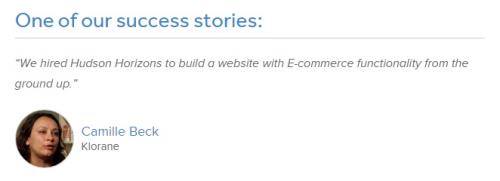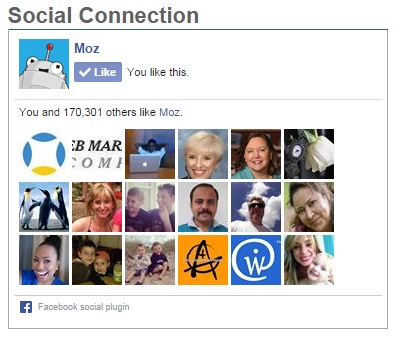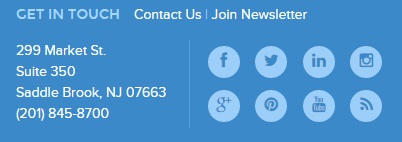Your website has one main goal: to generate more leads and customers. But you have one big problem: your website isn’t doing that. What could possibly be the problem?
These days, it’s harder to grab consumer interest right from the get go. That’s why boosting your site conversions is sort of like dating.
Now before you rule that metaphor out, let me explain. Your business is not the only one looking to attract attention. There are a lot of choices out there, all vying for your customer’s time. To have any chance of succeeding, you have to woo them into trusting your business over the millions of other choices that they have.
Here’s how:
Element 1: Highlight your value proposition
Defined as the service or feature that makes your business or product attractive to potential customers, your business’s value proposition should be the core component of your marketing messages. Your value proposition essentially answers the question, “Why should I choose you over other businesses?”
Take our services pages.

We not only list what makes us stand out from other Web agencies in a visually compelling way but we also describe how we can help our clients meet their business goals.
By clearly outlining the benefits customers will get when they sign up with your business, you position yourself as the expert who can solve customers’ problems in a unique and innovative way.
Element 2: Blog on your website
No longer is blogging just an online notebook to record your daily thoughts and activities. Now, blogging for business is an invaluable marketing tool that can help you gain customer trust and increase your Web exposure.
The way to capture that conversion from your blog is to add a call-to-action (CTA) at the bottom of your posts directing them to complete one of your goals, whether that goal is to download your e-book, subscribe to your blog, or share your blog on social media.
Take this Copyblogger CTA at the bottom of their blog.

The blue box is eye-catching and the copy is more engaging than simply adding small social sharing buttons.
Pro tip: When writing your call-to-action box, use social proof in your CTA copy to psychologically persuade someone to convert. Seeing that others already trust your brand will go a long way in building confidence in your brand for future visitors.
For example, look at this Zen Habits CTA at the bottom of their posts.

Or this Zombies, Run! CTA at the bottom of their homepage.

Why do you trust them? Because they reveal numbers. The logic is that if one million people already trust their brand, then you should too.
Element 3: Showcase social proof
Social proof should not be limited to just the bottom of your blog posts but should be included throughout your entire site, particularly on sections or pages that require an action. Here are effective social proof examples you should think about including in your site, if you don’t already.
“Featured in” icons

Commonly found at the bottom of websites, these icons show which publications a business has been featured in or what awards they have won. The icons add credibility to the business, because they show that the business is reputable enough to have gained press attention.
Customer testimonials

Found on our home page and “Get Started” pages, customer testimonials help site visitors see how we have helped similar businesses solve their problems. Positive reviews act as endorsements for your business or product, showing that you are trustworthy expert in your field.
Social icons

Moz not only displays their huge social fan base but also showcases which of your friends already follow them on social media. This has the dual effect of proving their legitimacy while also channeling a “I trust my friends, so I’ll do what my friends do” mentality.
Element 4: Make UX the foremost component of your Web design
Your website’s overall user-friendliness factors heavily in your site’s conversion rates. If your site doesn’t create an exceptional user experience (UX), then it stands little to no chance in generating conversions. Poor UX can frustrate potential customers to the point that they would rather leave your site than try to figure out where to go to find more information.
So what can you do to improve your site’s UX?
Internal Linking
Internal linking is the practice of adding links throughout your site copy and blog content that lead to other relevant pages in your website.
It has two purposes.
The first is to help your user navigate your site a bit easier. There’s an unofficial Web design rule that it should only take users three clicks to find the information they are looking for. While you shouldn’t necessarily follow that rule down to a tee, the underlying message is that it should be simple to navigate through your site from page to page.
The second purpose of internal linking is to help improve your site’s SEO, as it’s yet another signal Google uses to index and understand the content on your website.
Easily findable contact information

Including your address, phone number, and social profiles in the header or footer of your site helps customers know where you’re located and how they can contact you in case they have a question or are experiencing some sort of problem.
This is particularly important for local businesses, as your contact info helps search engines know the location of your business and can then display your business on local search results.
Ultimately, increasing your conversion rates depends on this: Think like your audience
Notice how these four elements aim to either persuade users to trust you or make life easier for them (or both). Therefore, channel your target audience and think about what they may want or need before you start wondering why your site isn’t converting well.